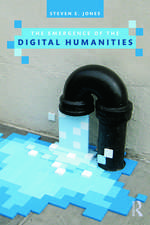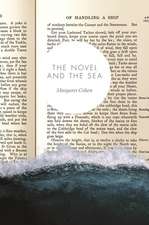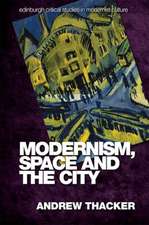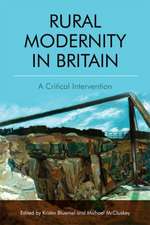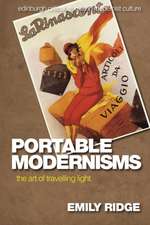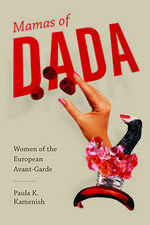Novels, Maps, Modernity: The Spatial Imagination, 1850–2000: Literary Criticism and Cultural Theory
Autor Eric Bulsonen Limba Engleză Paperback – 30 sep 2009
| Toate formatele și edițiile | Preț | Express |
|---|---|---|
| Paperback (1) | 424.58 lei 6-8 săpt. | |
| Taylor & Francis – 30 sep 2009 | 424.58 lei 6-8 săpt. | |
| Hardback (1) | 1106.81 lei 6-8 săpt. | |
| Taylor & Francis – 23 ian 2007 | 1106.81 lei 6-8 săpt. |
Din seria Literary Criticism and Cultural Theory
- 9%
 Preț: 935.20 lei
Preț: 935.20 lei - 9%
 Preț: 1037.81 lei
Preț: 1037.81 lei -
 Preț: 309.89 lei
Preț: 309.89 lei - 18%
 Preț: 1053.16 lei
Preț: 1053.16 lei - 18%
 Preț: 999.02 lei
Preț: 999.02 lei - 18%
 Preț: 1005.39 lei
Preț: 1005.39 lei - 18%
 Preț: 1102.88 lei
Preț: 1102.88 lei - 18%
 Preț: 1054.58 lei
Preț: 1054.58 lei - 18%
 Preț: 998.71 lei
Preț: 998.71 lei - 18%
 Preț: 701.56 lei
Preț: 701.56 lei - 18%
 Preț: 1109.78 lei
Preț: 1109.78 lei - 18%
 Preț: 1054.61 lei
Preț: 1054.61 lei - 18%
 Preț: 1062.98 lei
Preț: 1062.98 lei - 18%
 Preț: 1051.55 lei
Preț: 1051.55 lei - 15%
 Preț: 697.34 lei
Preț: 697.34 lei - 18%
 Preț: 1050.16 lei
Preț: 1050.16 lei - 18%
 Preț: 998.08 lei
Preț: 998.08 lei - 26%
 Preț: 819.09 lei
Preț: 819.09 lei - 26%
 Preț: 766.12 lei
Preț: 766.12 lei - 18%
 Preț: 997.45 lei
Preț: 997.45 lei - 18%
 Preț: 998.26 lei
Preț: 998.26 lei - 28%
 Preț: 490.08 lei
Preț: 490.08 lei - 18%
 Preț: 998.88 lei
Preț: 998.88 lei - 18%
 Preț: 1109.18 lei
Preț: 1109.18 lei - 18%
 Preț: 1105.24 lei
Preț: 1105.24 lei - 31%
 Preț: 763.64 lei
Preț: 763.64 lei - 18%
 Preț: 1000.61 lei
Preț: 1000.61 lei - 18%
 Preț: 999.82 lei
Preț: 999.82 lei - 26%
 Preț: 819.48 lei
Preț: 819.48 lei - 26%
 Preț: 763.78 lei
Preț: 763.78 lei - 18%
 Preț: 779.28 lei
Preț: 779.28 lei - 17%
 Preț: 245.56 lei
Preț: 245.56 lei - 18%
 Preț: 1106.81 lei
Preț: 1106.81 lei - 18%
 Preț: 998.56 lei
Preț: 998.56 lei - 26%
 Preț: 877.30 lei
Preț: 877.30 lei - 18%
 Preț: 999.46 lei
Preț: 999.46 lei - 26%
 Preț: 819.09 lei
Preț: 819.09 lei - 15%
 Preț: 673.44 lei
Preț: 673.44 lei -
 Preț: 365.54 lei
Preț: 365.54 lei - 18%
 Preț: 1052.35 lei
Preț: 1052.35 lei - 18%
 Preț: 1057.05 lei
Preț: 1057.05 lei - 18%
 Preț: 944.11 lei
Preț: 944.11 lei - 18%
 Preț: 1056.28 lei
Preț: 1056.28 lei - 26%
 Preț: 763.39 lei
Preț: 763.39 lei - 26%
 Preț: 819.09 lei
Preț: 819.09 lei - 31%
 Preț: 766.66 lei
Preț: 766.66 lei - 18%
 Preț: 997.45 lei
Preț: 997.45 lei - 26%
 Preț: 820.32 lei
Preț: 820.32 lei - 18%
 Preț: 731.71 lei
Preț: 731.71 lei - 18%
 Preț: 1002.36 lei
Preț: 1002.36 lei
Preț: 424.58 lei
Nou
81.24€ • 84.82$ • 67.24£
Carte tipărită la comandă
Livrare economică 04-18 aprilie
Specificații
ISBN-10: 0415800536
Pagini: 192
Ilustrații: maps
Dimensiuni: 156 x 234 x 11 mm
Greutate: 0.65 kg
Ediția:1
Editura: Taylor & Francis
Colecția Routledge
Seria Literary Criticism and Cultural Theory
Locul publicării:Oxford, United Kingdom
Cuprins
List of Figures. Acknowledgements. Introduction: Orienting, Disorienting the Novel 1. On Getting Oriented 2. Melville’s Zig-Zag World-Circle 3. Joyce’s Geodesy 4. Pynchon’s Baedeker Trick 5. On Getting Lost Notes. Bibliography. Index
Recenzii
Descriere
"Novels, Maps, Modernity is a remarkable book that promises to transform our knowledge of the representation of space in modern fiction." - Brian Richardson, University of Maryland
"Bulson’s informative book maps out the territory and points the way to further research and discovery." - Ian Pindar, Times Literary Supplement
Novels, Maps, Modernity argues that cartographic devices—including maps, sea charts, and aerial photographs—have radically shaped how novelistic space has been imagined and represented from the midnineteenth century to the end of the twentieth. More than an antidote to disorientation, Eric Bulson demonstrates that they conceal a more complex story about capitalism, urbanization, empire, and world war.
Guiding readers through the "cartographic encounters" of Melville, Joyce, Pynchon and the long tradition of literary mapping, Bulson provides an original and thoughtful argument about space and the modern novel.
In this volume, Bulson examines:
• the development of novelistic space from realism to postmodernism
• the "reality effect" of mapping and signposting within novels
• the juxtaposition of map and text
• the rise of literary maps and guidebooks.




